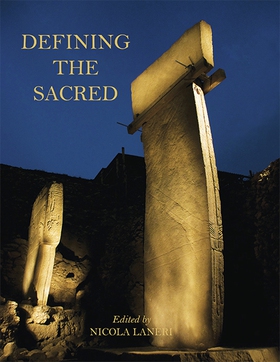
Lägg till önskelistan
Defining the Sacred e-bok
Pris
115 kr
Religion is a phenomenon that is inseparable from human society. It brings about a set of emotional, ideological and practical elements that are pervasive in the social fabric of any society and characterizable by a number of features. These include the establishment of intermediaries in the relationship between humans and the divine; the construction of ceremonial places for worshipping the gods and practicing ritual performances; and the creation ritual paraphernalia. Investigating the rel...
E-Bok
115 kr
Pris
Förlag
Oxbow Books
Utgiven
15 Februari 2021
Längd
200 sidor
Genrer
Filosofi Och Religion, Historia & Arkeologi, Fackböcker
Språk
English
Format
epub
Kopieringsskydd
Vattenmärkt
ISBN
9781782976837
Religion is a phenomenon that is inseparable from human society. It brings about a set of emotional, ideological and practical elements that are pervasive in the social fabric of any society and characterizable by a number of features. These include the establishment of intermediaries in the relationship between humans and the divine; the construction of ceremonial places for worshipping the gods and practicing ritual performances; and the creation ritual paraphernalia. Investigating the religious dimensions of ancient societies encounters problems in defining such elements, especially with regard to societies that lack textual evidences and has tended to lead towards the identification of differentiation between the mental dimension, related to religious beliefs, and the material one associated with religious practices, resulting in a separation between scholars able to investigate, and possibly reconstruct, ritual practices (i.e., archaeologists), and those interested in defining the realm of ancient beliefs (i.e., philologists and religious historians).
The aim of this collection of papers is to attempt to bridge these two dimensions by breaking down existing boundaries in order to form a more comprehensive vision of religion among ancient Near Eastern societies. This approach requires that a higher consideration be given to those elements (either artificial -- buildings, objects, texts, etc. -- or natural -- landscapes, animals, trees, etc.) that are created through a materialization of religious beliefs and practices enacted by members of communities. These issues are addressed in a series of specific case-studies covering a broad chronological framework that from the Pre-pottery Neolithic to the Iron Age. (Cover illustration © German Archaeological Institute, photo N. Becker)




